This is a follow-up of that question.
The only reason I've got 8 transistors on that schematic is efficiency. I'm now trying to figure out whether switching losses are making it pointless to have so many transistors.
Theoretically only 1 of those transistors will be enough to run the motor, but power lost in the DS path is current squared times resistance so at 30A that's:
$$ 30^2*0.025 = 22.5 W $$
That's not a small loss and will probably require a huge heat sink. Contrary, if I put 8 transistors in parallel as in the schematic, each resistor will carry 30/8 = 3.75A, which will result in a total loss of:
$$ 3.75^2*0.025*8 = 2.81 W $$
However switching losses will increase 8 times. The answer to the other question has helped me determine that if I want to switch at 100ns the current needed to energize the gate will be 350mA, so times 8 (transistors) that's 2.8A or 14W, which is getting close to the loss with just 1 transistor. But thinking about it, 350mA is not consumed constantly rather only during gate energizing, which lasts 100ns. At a frequency of 22khz that's obviously 22k switches per second, times 100ns equalling 2.2ms of total time draining current per second.
Thus, the real power "wasted" in switching gates will be:
$$ 14 * 0.0022 = 0.031W $$
Which is substantially better than 14W, so having more transistors is clearly the better choice. Unfortunately I'm nowhere near an electrical engineer and I'm completely uncertain about my theory above, that's why I'm posting this question.
EDIT:
For future readers, since the comments on the answer are quite long: It turned out switching losses are not at all what I thought they were, what I was referring to as switching losses is apparently gate driver losses. The real power wasted is the sum of resistive losses and real switching losses, which in my case turned out to be optimal at 3 transistors, in theory.
